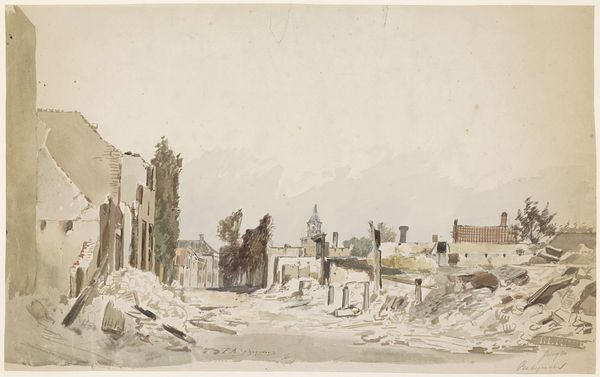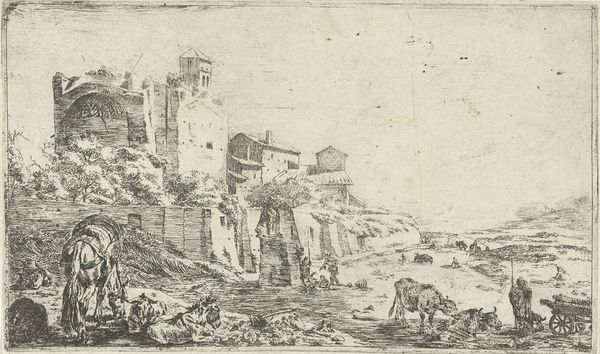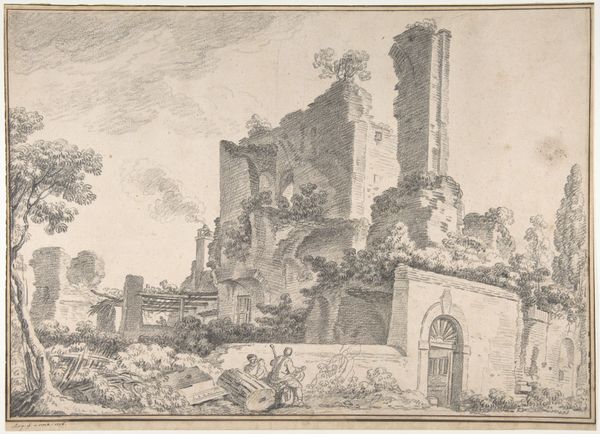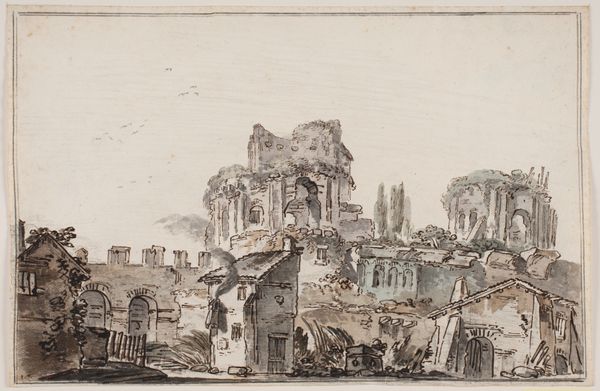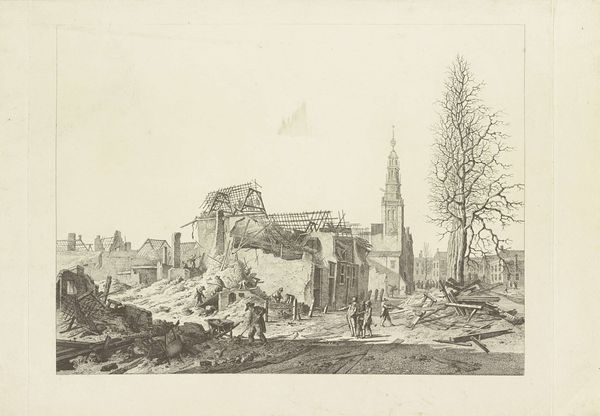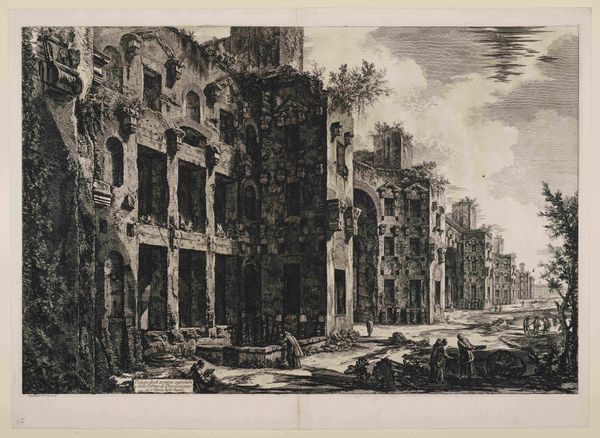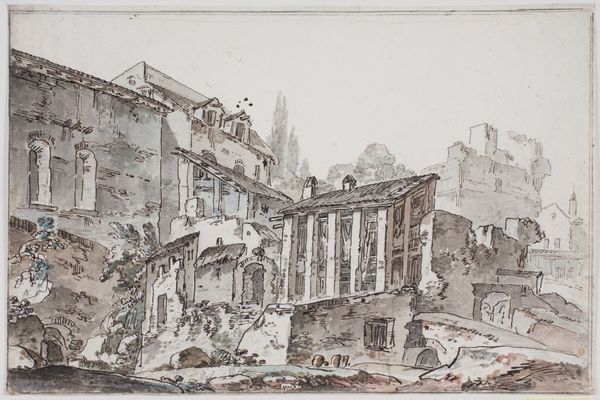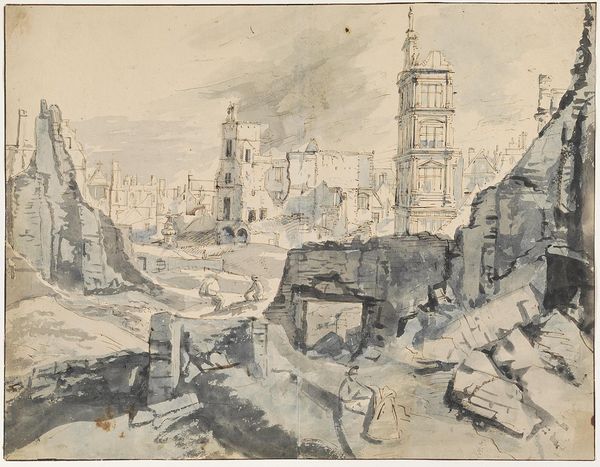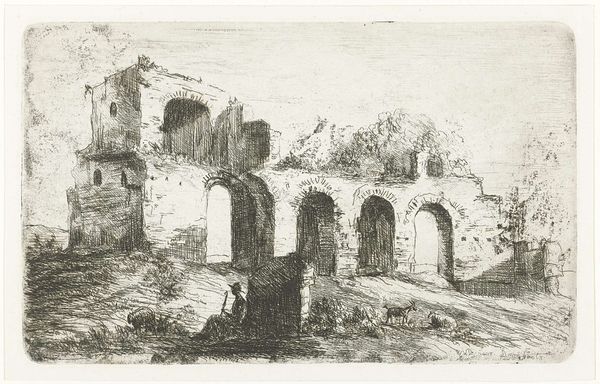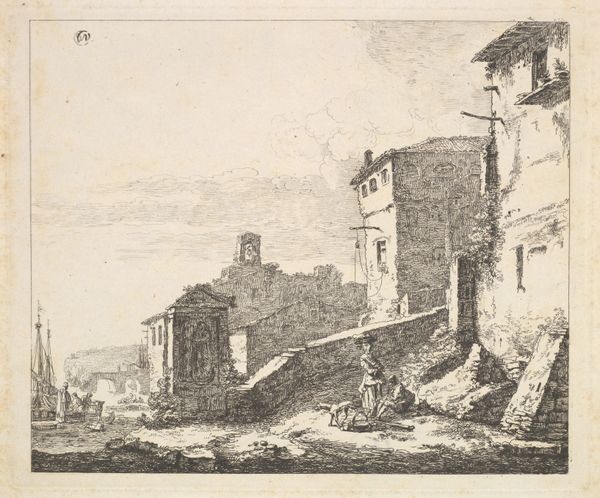
drawing, print, ink
#
drawing
#
ink drawing
#
baroque
# print
#
landscape
#
ink
Dimensions: sheet: 6 7/8 x 11 13/16 in. (17.5 x 30 cm)
Copyright: Public Domain
Curator: What a hauntingly beautiful vista. This ink drawing, "View of Bomarzo," created between 1647 and 1686 by Horatius de Hooch, captures the allure of ruins. The delicate rendering and atmospheric perspective give it an almost dreamlike quality, don't you think? Editor: Immediately, I’m struck by the socio-political undertones here. Beyond the romantic ruin-gazing of the Baroque period, consider the actual histories these decaying structures hold. This isn't just aesthetic; it's a commentary on power, decline, and the inevitable ephemerality of empire. Curator: Ah, that’s an intriguing point! It's hard to ignore that sense of lost grandeur. There is a touch of melancholy as it invites you to invent a narrative for its inhabitants long after they are gone. The soft gray washes highlight every rough edge and eroded stone. It looks like it's still smoldering with forgotten passions and lost voices. Editor: And that's where my intervention begins. This 'melancholy' might very well reflect the lived realities of the dispossessed, the marginalized, those who quite literally were made to live in the shadows cast by these monuments. Whose history are we choosing to remember here, and at whose expense? Curator: A heavy, but essential truth. Still, I can’t help but see beauty in decay. The interplay of light and shadow dancing on those crumbling walls creates an interesting dialogue of vulnerability and permanence. The artist is able to explore complex themes within the formal constraints of Baroque landscape. Editor: True, de Hooch is skilled, yet such visual skill was deployed at a historical moment of rampant inequality, sustained by often brutal means. Recognizing the artist’s technique is vital, yes, but never in a vacuum. Curator: I guess it comes down to what kind of stories we seek within these kinds of works. For me, the artistry lies in revealing the past, both in its physical remains and also the subtle emotions evoked. I feel like an archeologist uncovering buried secrets every time I come across this kind of picture. Editor: Yes, let us approach this view not as passive observers, but as active interrogators of the legacies imprinted upon these very stones, of who got to tell those initial stories, and for what purpose. Perhaps then, we will uncover narratives far more meaningful than simple melancholic beauty. Curator: Absolutely, it’s always about layers and finding deeper meanings. These quiet conversations transform the viewing from merely seeing to a thoughtful discourse of art, architecture and humanity's fragile place within both. Editor: Precisely. And I believe that is a space in which art can truly serve us.
Comments
No comments
Be the first to comment and join the conversation on the ultimate creative platform.
